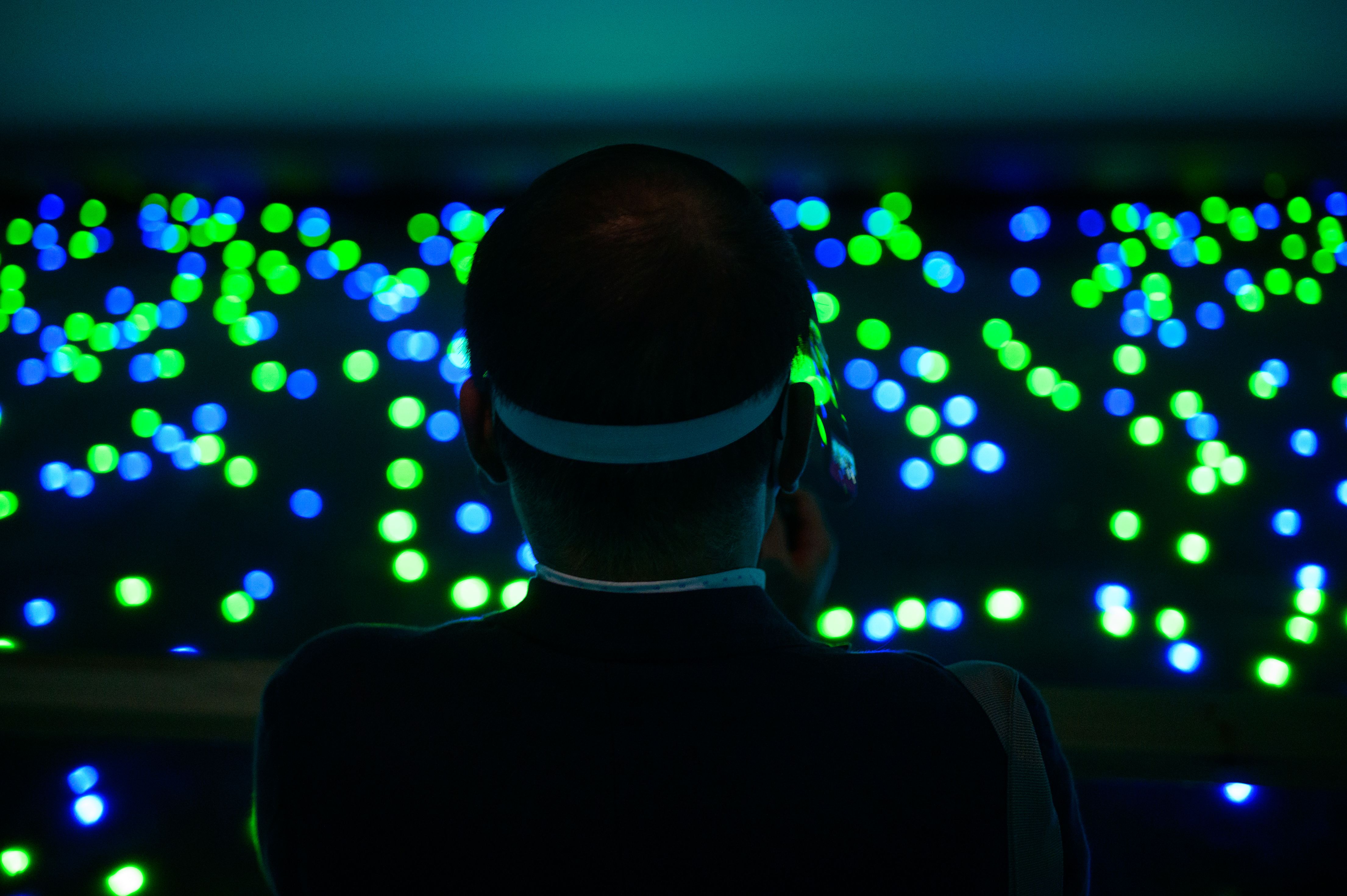
The biggest takeaway from the lessons of nature, says the artist Tatsuo Miyajima, is that humans are not invincible. Having witnessed one of the worst natural disasters to hit his home country of Japan in 2011, followed by the global pandemic over the past two years, he says that now is the time to reflect on the priorities of life.
“With the development of science and technology, we humans are under the illusion that we can do anything, and are trying to manipulate nature at will. But nature and the universe behave in unpredictable ways,” Miyajima told Artnet News.
Coming from a prominent sculptor and installation artist who relies heavily on technology, this statement may seem dissonant at first glance. Miyajima is best known for his “gadgets”—the flashing digital LED counters chronicling continuous, repetitive cycles from one to nine. But in his conception, the digits’ incessant blinking is a philosophical representation of the life journey, centering around the Buddhist teachings that are widely understood in Japan and across many parts of Asia. His most recent works expand this reflection on the intersection between technology and philosophy.
People wearing face masks take in a preview of Sea of Time—TOHOKU, a project honoring tsunami victims by artist Tatsuo Miyajima. Photo: Philip Fong/AFP via Getty Images.
One ongoing project that Miyajima has been developing is Sea of Time—TOHOKU, an initiative to honor the memories of those who suffered from the “3.11” earthquake and tsunami that rocked Japan on March 11, 2011. The 9.1-magnitude undersea earthquake east of the Tohoku region was the strongest in the country’s history, and it caused a tsunami with waves as high as 132 feet. Updated figures released last year totaled 19,747 lives lost, while 6,242 were injured and 2,556 went missing.
The project’s final format is as yet unknown, but will incorporate Miyajima’s signature LED counters. “We are working with 3,000 people who have been affected by the disaster for 10 years to build it and install it in the affected areas,” the artist explained.
He offered a glimpse of the work, which is backed by crowdfunding and the artist’s own funds, at a presentation at Tokyo’s Mori Art Museum in 2020. But the final version will only be ready in 2027, which marks the 10th anniversary of the “Sea of Time” series. Participants from the Tohoku region are invited to set the speed of the counters, and the generative process is aimed at creating an opportunity for them to heal. “I wanted to face the earthquake disaster through art,” said one participant, a 41-year-old male.
Miyajima has taken a similar tack with his own practice, using art to process the pandemic. Unable to travel, the artist said he became “mentally lonely.” But the forced isolation has also given him the chance to do things he never had time to do, such as organizing his archives and trying out new types of works. (The artist admitted he was also secretly pleased that he did not have to hobnob at various events and dinners, as most shows have been canceled.)
Installation view of “Tatsuo Miyajima: Art In You,” 2022. Courtesy of Lisson Gallery, London.
Among the results of this lockdown period is a new body of work called “Painting of Change,” which the artist debuted in the solo exhibition “Art In You” at London’s Lisson Gallery (it wraps up tomorrow, but the show will still be available for viewing online).
“We have a Buddhist concept of ‘all things are impermanent.’ This is the idea that everything is constantly changing and never stays the same, which fits perfectly with the Japanese climate,” Miyajima noted. “In this work [Painting of Change], I dared to leave fate to chance, hoping that people would actually experience this unpredictable world and think about what time is and what nature is.”
The new paintings—in oil on canvas or gold leaf on board—still revolve around numbers, but this time, rather than powered by electronic circuitry, the figures are decided by fate: viewers are asked to roll a specially made die exhibited alongside the works and change the number on display accordingly.
Installation view of “Tatsuo Miyajima: Art In You,” 2022. Courtesy of Lisson Gallery, London.
The installation of the show at Lisson got Miyajima thinking about change once again. Japan’s borders were closed to foreign visitors for nearly two years until this week, when the government announced that it is relaxing travel restrictions. It wasn’t easy for Japanese people to travel abroad, either—Miyajima only made his first international trip since the pandemic for his London show.
On arriving in the U.K., the artist was struck by the contrast. Unlike most places in Asia, which are still cautious about the pandemic, London is thriving under its ‘living with Covid’ policy, and Miyajima, said he was happy to experience a vibrant cultural scene once again. “Japan had a lockdown of cultural and artistic activities due to Covid. Performing arts in particular suffered tremendously,” he noted.
The cultural scene in Japan, he says, should be as active as that of London, but he dismissed the idea of having another art fair in Tokyo, a proposal recently floated by Japan’s Agency for Cultural Affairs: “I personally do not think that bringing more art fairs to the Asian area will have much effect.” Strengthening local arts education and public museum exhibitions is more important, he said.
“In London,” he recounted, “I went to the British Museum, because my work is in the Japan section there. What surprised me was that the museum was free. So many tourists and schoolchildren were there. I saw some children running around the Egyptian section and touching the mummies. I thought this was wonderful. I felt that art was liberating.”